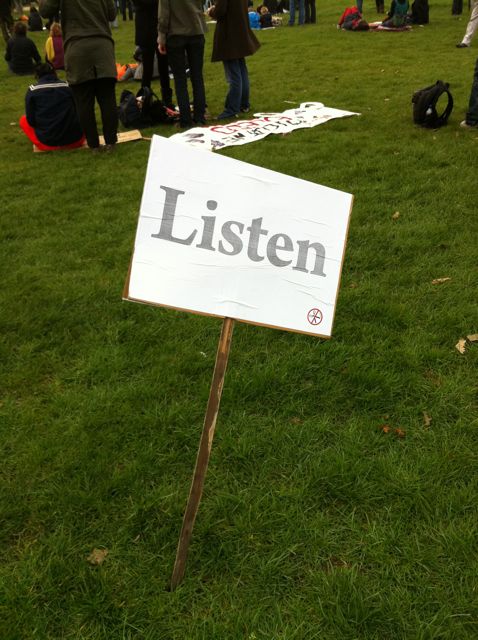When Stephen Elop, the newly appointed CEO of Nokia wanted to rouse his employees into reacting to their loss of market leadership, he sent a memo to the whole company. He began it with a story.
At first glance, the story had nothing to do with mobile telecommunications. It told of a man standing on a burning oil platform faced with a stark choice: waiting to burn to extinction along with the flaming rig or to risk the plunge into the freezing water in hope of rescue. After securing his audience’s attention with this arresting image, Elop explains his metaphor:
“We poured gasoline on our own burning platform. I believe we have lacked accountability and leadership to align and direct the company through these disruptive times. We had a series of misses. We haven’t been delivering innovation fast enough. We’re not collaborating internally. Nokia, our platform, is burning.” Just as the man on the platform had to behave differently and do the unthinkable, so did Nokia executives.
Only a few days after the circulation of the memo, Elop and Steve Ballmer, Microsoft CEO, posted an open letter announcing plans for a broad strategic partnership that “combines the respective strengths of our companies and builds a new global mobile ecosystem.” Moreover, Nokia would adopt Windows Phone as its primary smartphone strategy. So why not merely announce the partnership rather than waste time with unconnected anecdotes about oil platforms?
Elop needed to prepare his people emotionally for the changes ahead. Elop’s story instilled in them a sense of urgency which would align them all in a new business direction.
Let’s explore how storytelling helps a leader influence his or her organisation. Traditionally, we look up to storytellers as bearers of wisdom, who embody a special authority which trumps hierarchical roles. In pre-historical societies, the storyteller was the group member who dispensed knowledge essential for the survival of the tribe, using a range of analogies and metaphors. This was a creative endeavour. Somewhere in our primitive brains, we haven’t forgotten that, and we still respond. This is why great leaders need to be great storytellers.
What stories don’t do is simply supply information in a neutral way. They present events, people and facts in a certain light. Our interpretations are covertly – and thus irresistibly – directed. Stories get under our skin. That’s what makes storytelling such an effective tool for influencing. Once Elop had seeded the image of the burning oil platform in the minds of his employees, it would have been very difficult for them to resist his interpretation of Nokia’s market position, and the conclusion that drastic action had to be taken.
Stories get our imaginative juices working. They make us curious about what else there is to find out – some stories satisfy that curiosity with a ending, others prompt us to ask more questions and get involved – so we supply the ending ourselves. In this instance, Elop provided the happy ending a few days later with the announcement of a rescue in the shape of a lifesaving partnership with Microsoft. By telling a story first, he guided his people towards seeing this change as positive solution to the crisis rather than a new threat.
Top ten tips for inspiring storytelling
- Think about where you are in the story. Are you an outsider to unfolding events, or the main character?
- Make sure you are taking your audience on a journey. Stories are full of events and revelations which take the audience somewhere new.
- Don’t rush. The pleasure is in the telling.
- Allow yourself to see the pictures, hear the sounds, smell the scents, savour the tastes. Then your audience will too.
- All the best stories contain transformations. Think about what transformation you want your audience to experience by the end of the story too.
- Stories don’t have to be original to be effective; they do have to be told with conviction and sincerity.
- Audiences love it when you re-integrate a detail you’ve casually mentioned earlier – especially when it holds the key to your story’s resolution.
- A pause, a look, a gesture all can convey as much, if not more, than words.
- To keep your audiences on their toes, use… suspense!
- The greater the range of emotions in your story, the deeper the connection you will build with your audience.




